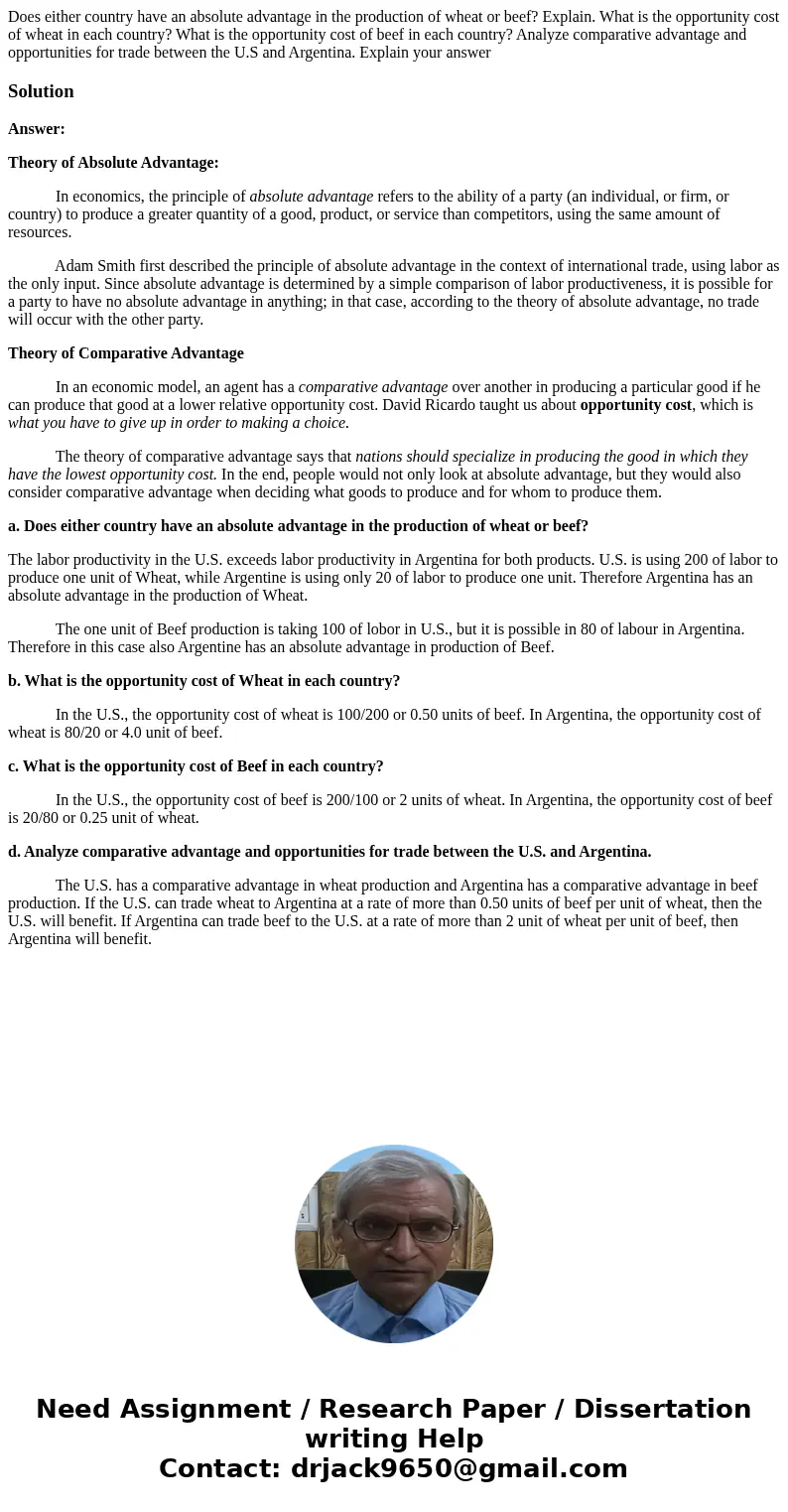Does either country have an absolute advantage in the produc
Solution
Answer:
Theory of Absolute Advantage:
In economics, the principle of absolute advantage refers to the ability of a party (an individual, or firm, or country) to produce a greater quantity of a good, product, or service than competitors, using the same amount of resources.
Adam Smith first described the principle of absolute advantage in the context of international trade, using labor as the only input. Since absolute advantage is determined by a simple comparison of labor productiveness, it is possible for a party to have no absolute advantage in anything; in that case, according to the theory of absolute advantage, no trade will occur with the other party.
Theory of Comparative Advantage
In an economic model, an agent has a comparative advantage over another in producing a particular good if he can produce that good at a lower relative opportunity cost. David Ricardo taught us about opportunity cost, which is what you have to give up in order to making a choice.
The theory of comparative advantage says that nations should specialize in producing the good in which they have the lowest opportunity cost. In the end, people would not only look at absolute advantage, but they would also consider comparative advantage when deciding what goods to produce and for whom to produce them.
a. Does either country have an absolute advantage in the production of wheat or beef?
The labor productivity in the U.S. exceeds labor productivity in Argentina for both products. U.S. is using 200 of labor to produce one unit of Wheat, while Argentine is using only 20 of labor to produce one unit. Therefore Argentina has an absolute advantage in the production of Wheat.
The one unit of Beef production is taking 100 of lobor in U.S., but it is possible in 80 of labour in Argentina. Therefore in this case also Argentine has an absolute advantage in production of Beef.
b. What is the opportunity cost of Wheat in each country?
In the U.S., the opportunity cost of wheat is 100/200 or 0.50 units of beef. In Argentina, the opportunity cost of wheat is 80/20 or 4.0 unit of beef.
c. What is the opportunity cost of Beef in each country?
In the U.S., the opportunity cost of beef is 200/100 or 2 units of wheat. In Argentina, the opportunity cost of beef is 20/80 or 0.25 unit of wheat.
d. Analyze comparative advantage and opportunities for trade between the U.S. and Argentina.
The U.S. has a comparative advantage in wheat production and Argentina has a comparative advantage in beef production. If the U.S. can trade wheat to Argentina at a rate of more than 0.50 units of beef per unit of wheat, then the U.S. will benefit. If Argentina can trade beef to the U.S. at a rate of more than 2 unit of wheat per unit of beef, then Argentina will benefit.

 Homework Sourse
Homework Sourse